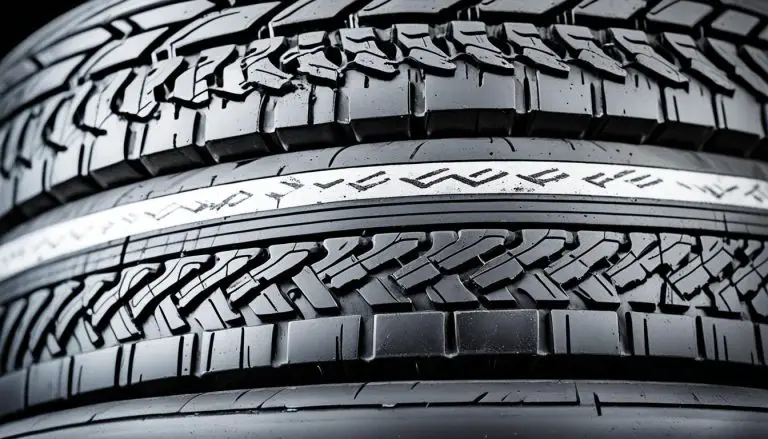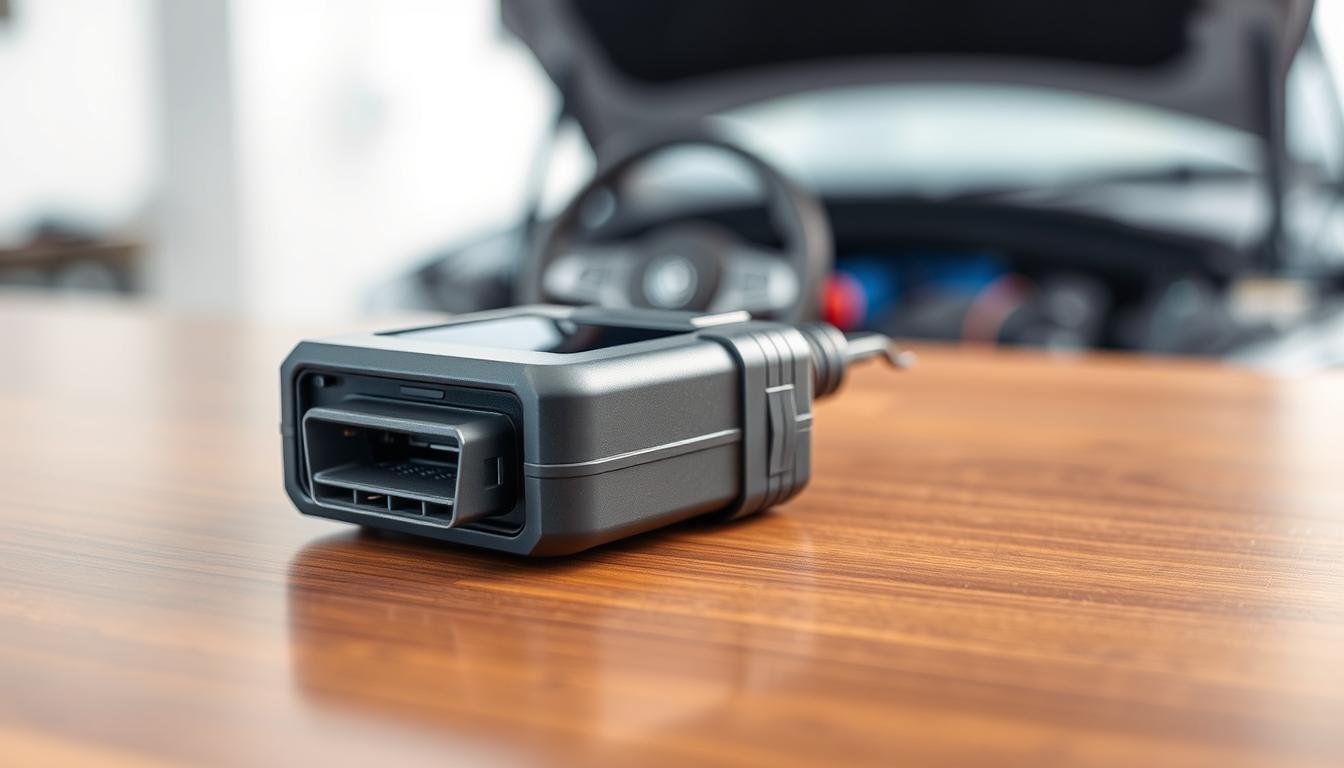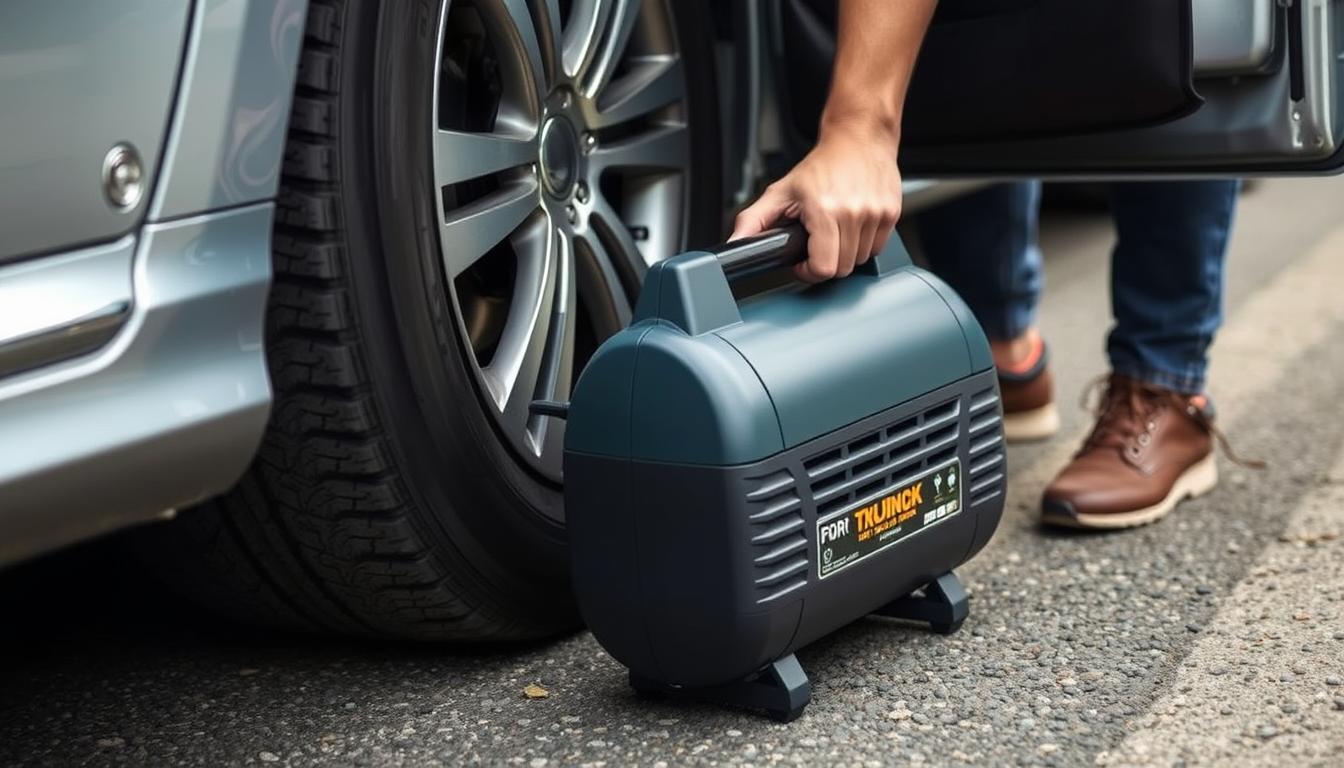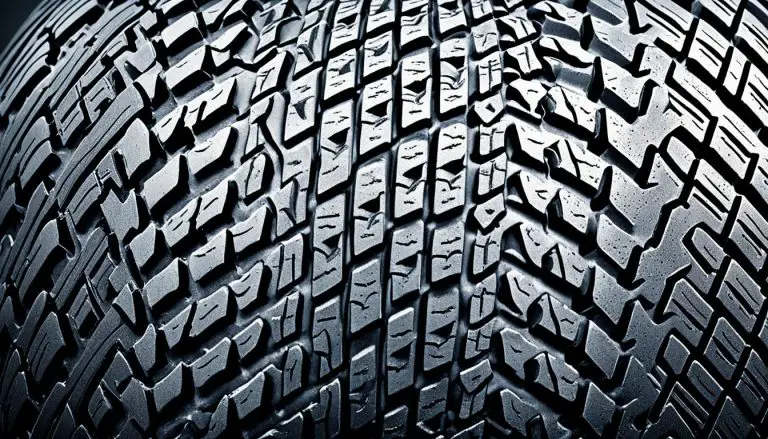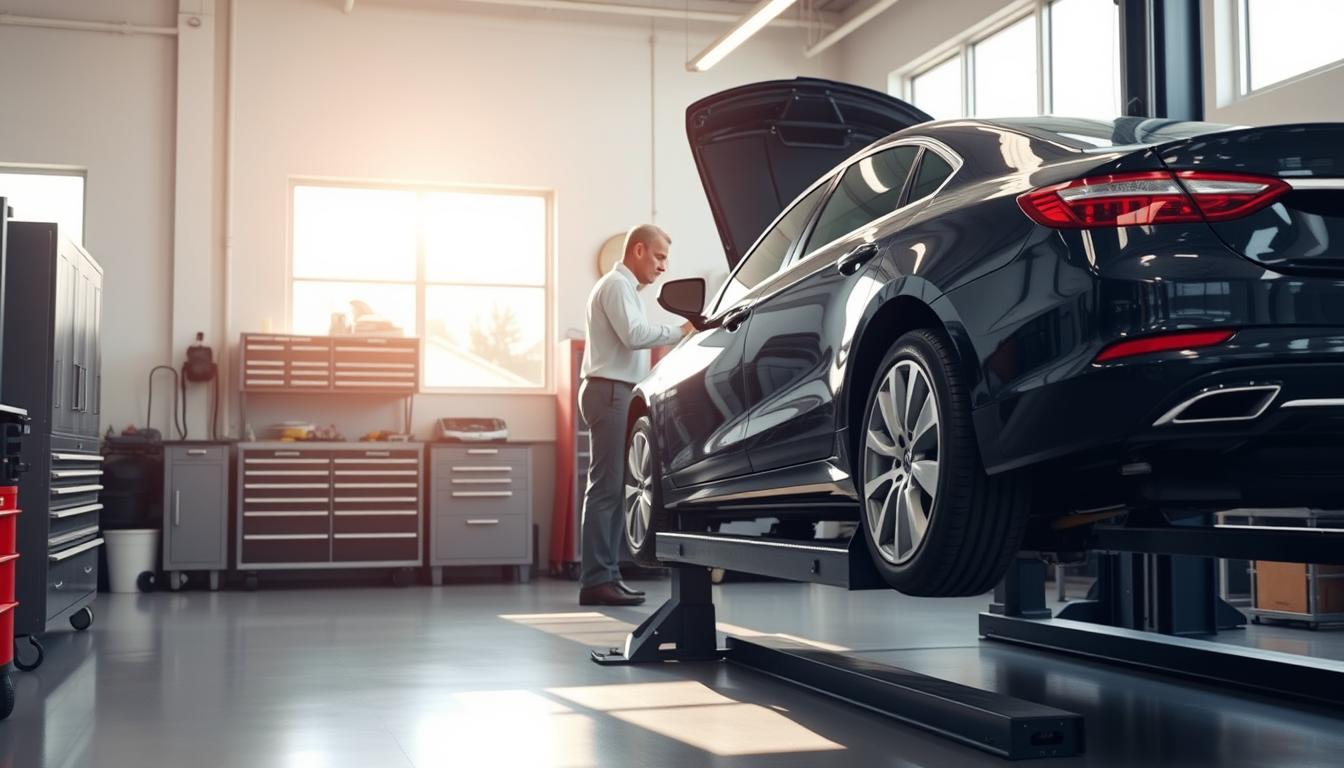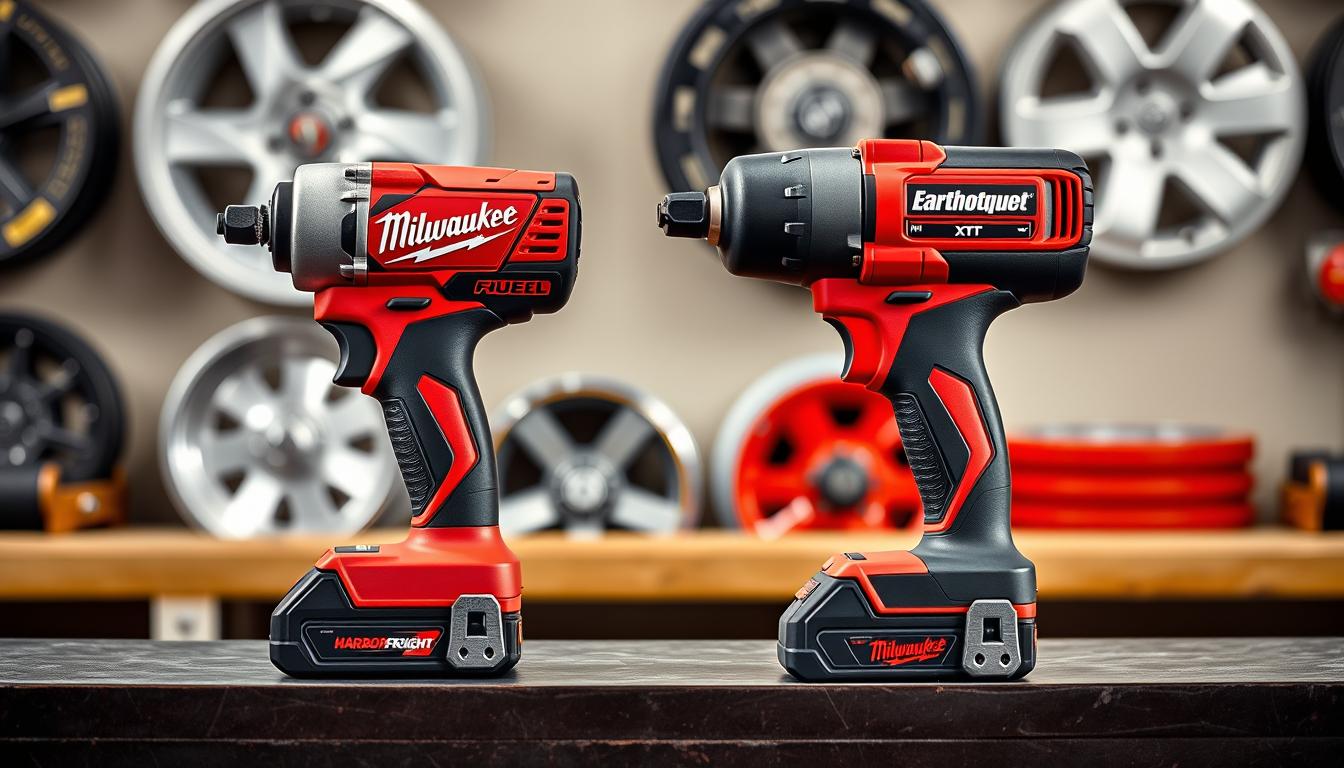
Best Milwaukee & Harbor Freight Tools for Lug Nuts — when stubborn lug nuts won’t budge, the right impact wrench can be the difference between a ten-minute job and hours of fighting hardware. Milwaukee represents the premium, pro-grade approach; Harbor Freight answers with budget-friendly, surprisingly powerful options. This guide compares both brands so you can pick the tool that’s powerful enough to remove stuck lug nuts without wasting money.
Short thesis: if you work on vehicles daily or need maximum long-term reliability, Milwaukee is usually the better investment; if you change tires occasionally or need a capable tool on a tight budget, Harbor Freight often delivers the best value. Quick picks: jump to the recommendations below to see our top model choices for pros and DIYers.
Who benefits: professional mechanics and fleet techs who need sustained high torque will lean toward Milwaukee; backyard DIYers and infrequent tire changers will find Harbor Freight models meet most needs affordably.
Milwaukee Impact Wrenches – Professional Power
Milwaukee has earned a reputation for professional-grade tools that deliver consistent, long-lasting performance. Their impact wrenches are a top pick for mechanics and serious DIYers who need a tool that is powerful enough to remove stubborn lug nuts and stand up to daily use.
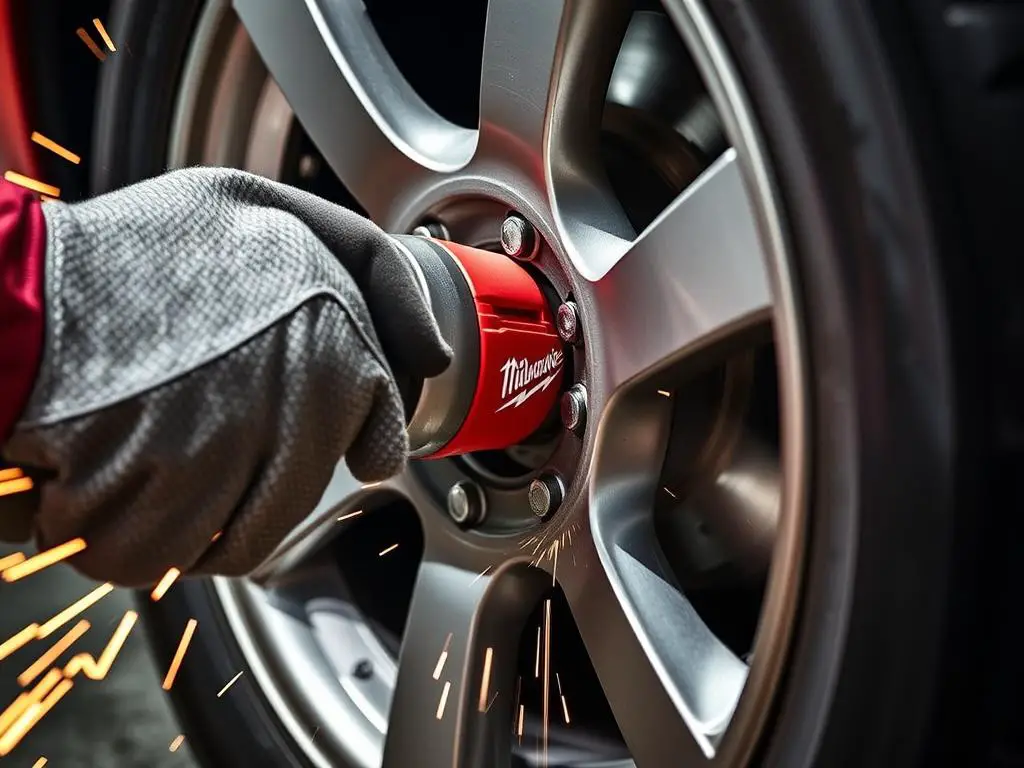
Milwaukee M18 FUEL™ 1/2″ High Torque Impact Wrench
The Milwaukee M18 FUEL™ 1/2″ High Torque Impact Wrench is the benchmark for cordless lug-nut removal. According to Milwaukee specs, this model delivers huge torque numbers (check the official spec sheet for exact fastening vs. breakaway figures) and is built around the M18 battery ecosystem for wide compatibility and proven runtime.
Advantages
- Industry-leading nut-busting and fastening performance for heavy-duty lug nuts
- Four-mode DRIVE CONTROL™ including a bolt removal mode for precision
- Works with the full M18 platform—use existing batteries across 200+ tools
- Brushless motor improves runtime and long-term durability
- Robust construction suited to shop use and repeated hard hits
Disadvantages
- Higher upfront cost compared with budget brands (tool-only SRP varies by model)
- Heavier with a high-capacity battery installed—tradeoff for power
- Batteries and charger may be sold separately depending on kit vs tool-only options
- May be more tool than needed for very occasional home use
Quick specs to surface before you buy: model number, drive size (1/2″), typical fastening vs breakaway torque (see Milwaukee), recommended battery sizes (8.0Ah+ for frequent heavy work), and weight with a high-capacity battery. If you regularly service trucks or do dozens of tire changes per week, go for a kit that includes high-capacity batteries and a fast charger rather than a tool-only purchase.
Real-world feedback backs the specs: mechanics praise the Milwaukee impact wrench for removing lug nuts other tools struggle with. One mechanic shared that the 1/2″ high-torque unit handled multiple tire changes on heavy trucks using only part of a 5.0Ah battery—demonstrating how the M18 platform can be efficient in real shop conditions.
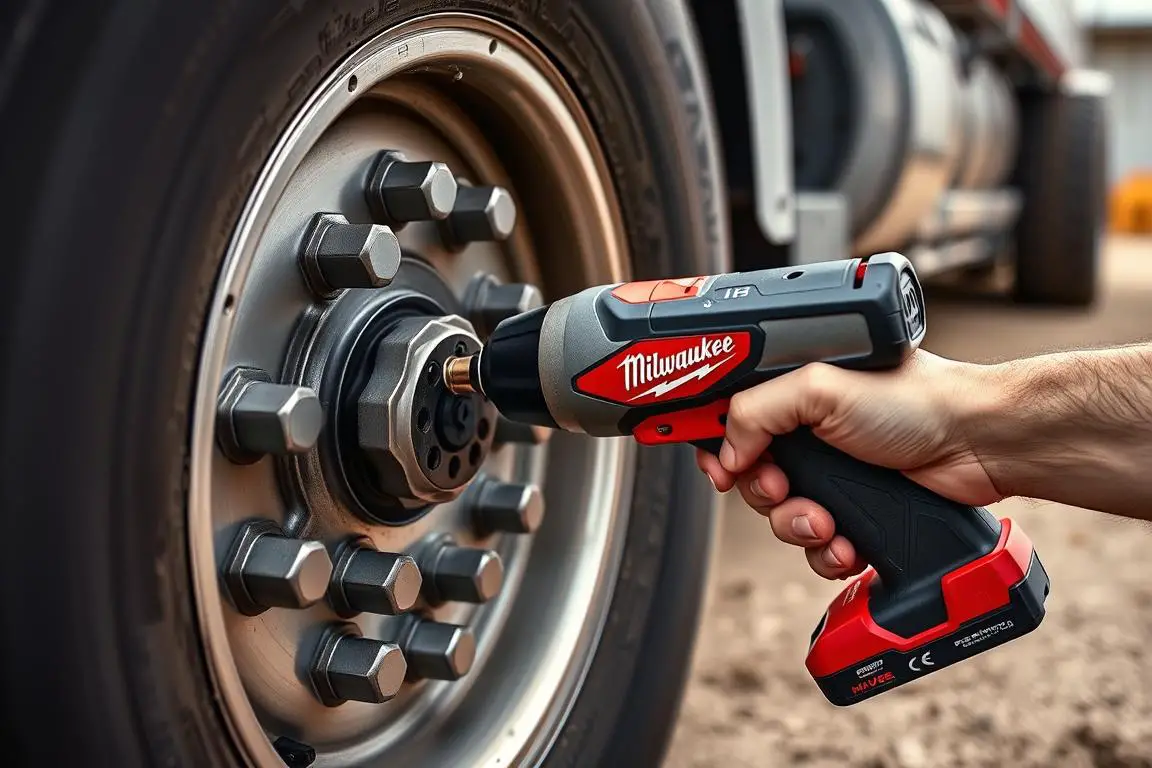
Professional Power for Stubborn Lug Nuts
Want dependable performance? For heavy, frequent work choose a kit with charger and at least one 8.0Ah or 12.0Ah battery—this yields the battery longer life and runtime professionals expect. For occasional users, a tool-only purchase with an existing M18 battery can save money.
Milwaukee M18 FUEL™ 3/4″ High Torque Impact Wrench
The Milwaukee M18 FUEL™ 3/4″ High Torque Impact Wrench is aimed at heavier commercial and equipment work where extra durability and a larger drive are needed. The 3/4″ drive is built for repeated heavy hits and larger sockets—ideal if you work on large trucks, agricultural equipment, or heavy trailers.
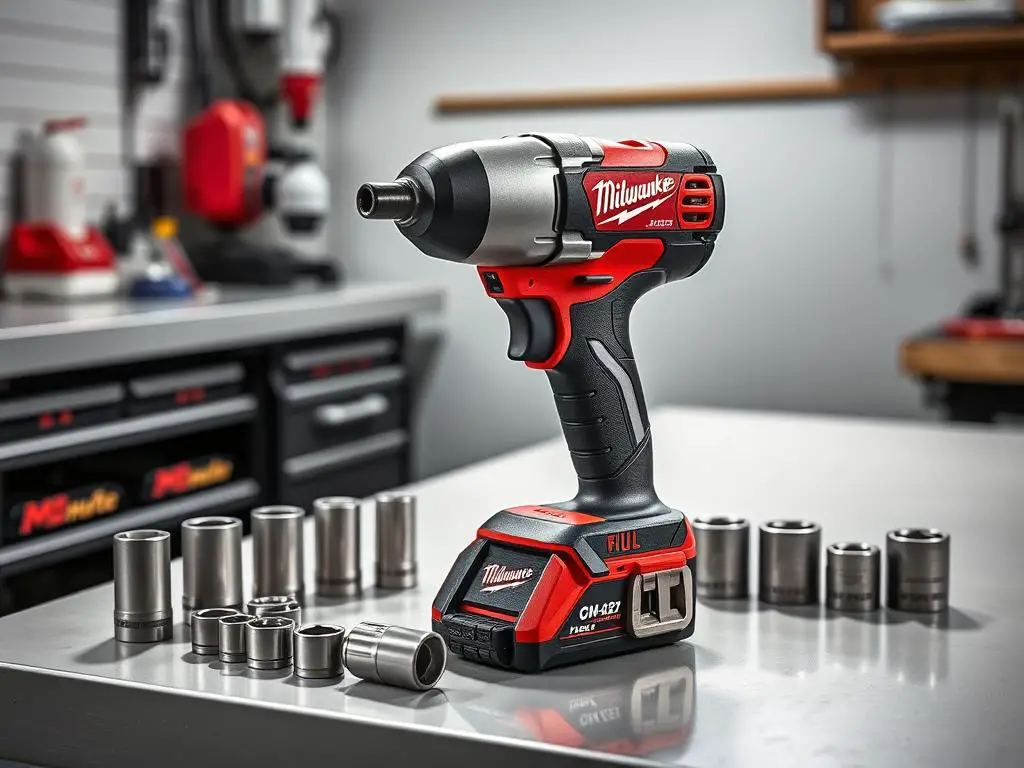
On paper and in practice the 3/4″ variants offer very high torque and a more durable drive train. User impressions often echo the sentiment that “you will find the 3/4 is one heck of a tool”—many buyers pay a premium for the extra robustness and often order larger batteries (some ordered 12.0 battery packs) to extend run time for long jobs. If you think you’ll find the 3/4” model useful for commercial tasks, consider the kit that includes charger and two batteries for continuous operation.
Heavy-Duty Performance for Tough Jobs
If you handle commercial trucks or heavy equipment, opt for the 3/4″ model and pair it with high-capacity batteries and a fast charger. That setup reduces downtime and is a better long-term investment than repeatedly replacing cheaper units.
Harbor Freight Options – Budget-Friendly Lug Nut Tools
Harbor Freight is known for affordable tools that often punch above their weight for occasional to moderate use. Their Earthquake XT and Bauer lines give DIYers and small shops access to high torque numbers at a fraction of the price of premium brands—so if you need something powerful enough to remove stuck lug nuts without breaking the bank, these are the models to consider.
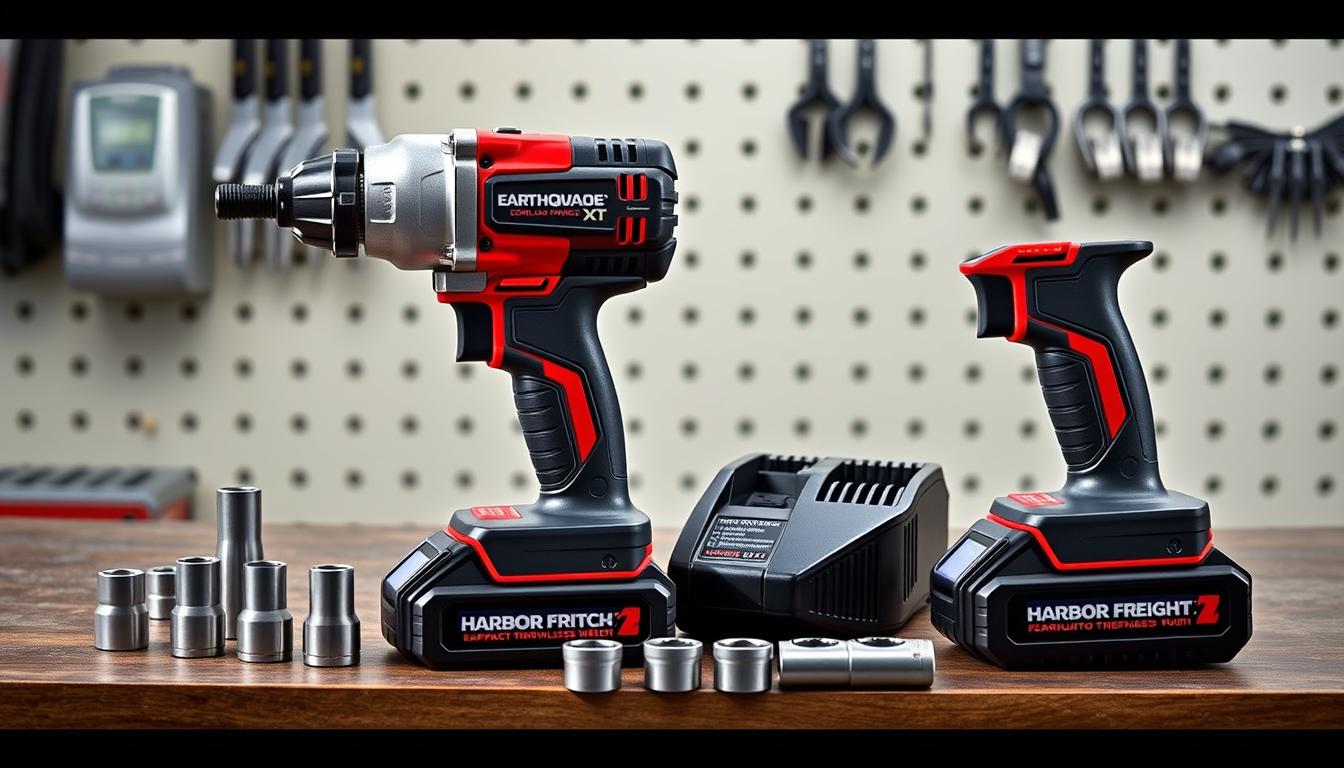
Harbor Freight Earthquake XT 20V 1/2″ Cordless Impact Wrench
The Earthquake XT 20V 1/2″ Cordless Impact Wrench is Harbor Freight’s high-torque cordless offering. With advertised breakaway torque in the 1,000–1,200 ft-lbs range, it comes close to the performance of pricier models for many real-world tasks while remaining significantly cheaper.
Advantages
- High breakaway torque for a cordless tool—good for seized lug nuts
- Lower price point than premium brands ($149–$199 typical range)
- 3-speed settings for control across different jobs
- Built-in LED work light for low-light wheel work
- Brushless motor on newer XT models improves runtime and longevity
Disadvantages
- Batteries and charger are often sold separately—factor that into cost
- Construction and long-term durability may not match pro-grade tools
- Smaller ecosystem of compatible tools compared with M18
- Some users report mixed long-term reliability—good for occasional heavy use, less proven under daily shop cycles
Best for: DIYers who occasionally change wheels or need to remove rusted lug nuts, and small shops looking for a lower-cost backup impact. Many users — especially those who don’t have an M18 battery platform — find the Earthquake XT impacts powerful enough to remove lug nuts that used to require elbow grease or a cheater bar.
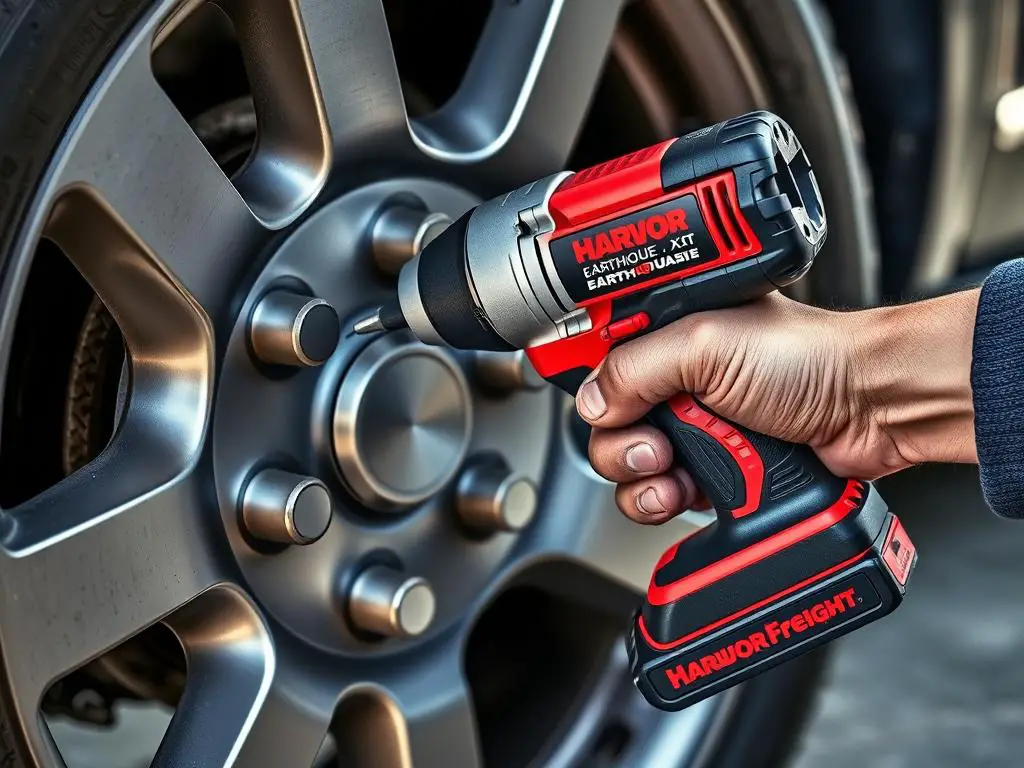
Powerful Performance on a Budget
If you need strong, affordable performance for occasional to moderate lug nut jobs, the Earthquake XT is a solid pick. Consider buying batteries or a kit if you plan to use it regularly.
Harbor Freight Pittsburgh Automotive 1″ Drive Impact Wrench
For extreme cases—heavy equipment, agricultural rigs, and large commercial wheels—the Pittsburgh Automotive 1″ Drive Impact Wrench (air-powered) delivers massive torque. With a rated maximum torque around 1,900 ft-lbs, this tool is in the range required for the toughest lug nuts and large studs.
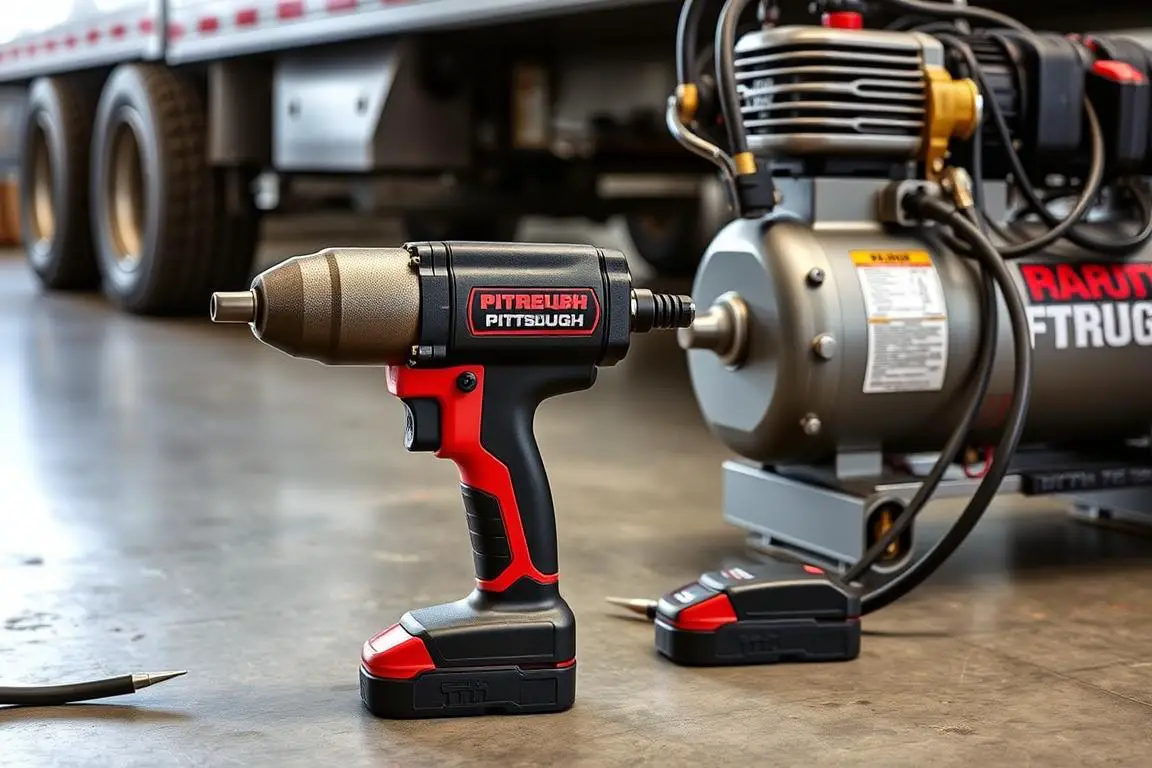
Note: this is an air tool—so you’ll need a matching compressor and hoses. It’s not a cordless convenience tool, but for value-focused shops that already use air tools, it’s a way to get one-inch-drive power without spending big on OEM air impacts.
Best for: heavy equipment shops, fleet maintenance, or anyone regularly removing very large lug nuts where a cordless tool may struggle. For most passenger-vehicle tasks the 1″ drive is overkill.
Maximum Power at Minimum Cost
If you already run shop air and need brute force for large lug nuts, the Pittsburgh 1″ air impact is an economical way to get professional-grade torque.
Harbor Freight Bauer 20V 1/2″ Impact Wrench
The Bauer 20V 1/2″ Impact Wrench is the most budget-oriented option and works well for light-duty automotive work. With roughly 400–500 ft-lbs of torque, it handles typical passenger-vehicle lug nuts that aren’t rust-frozen.
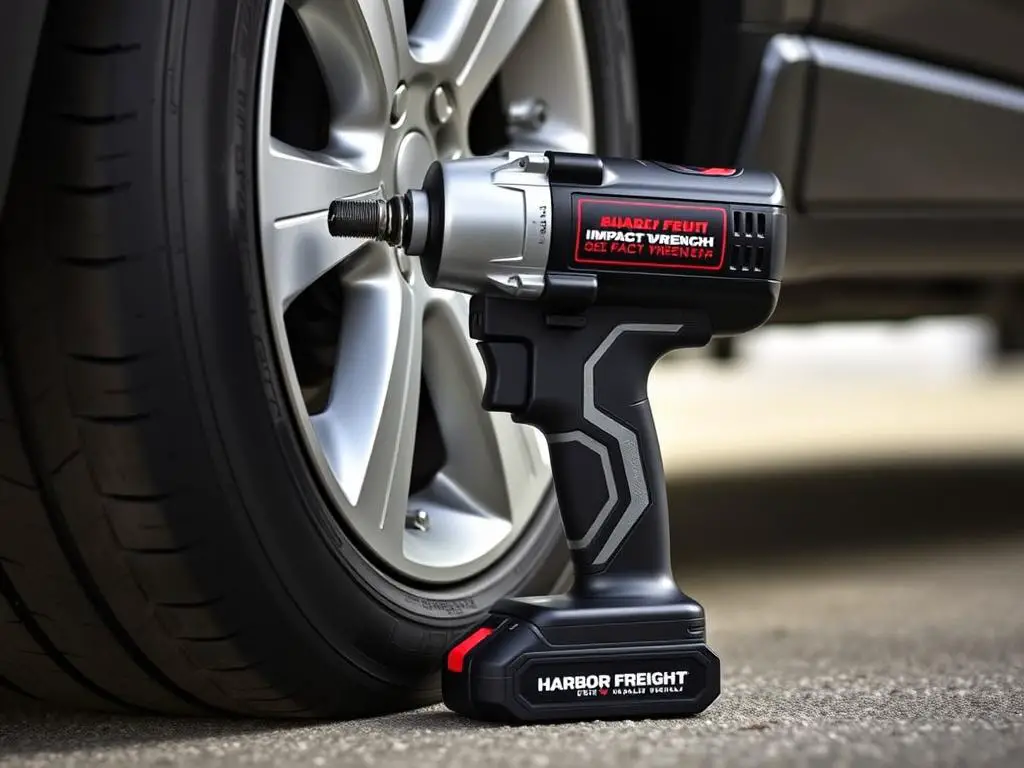
Best for: infrequent tire changes, home garages, and users who want a cheap, lightweight impact for occasional wheel work. If you ordered the cheapest model and find it underpowered, Harbor Freight’s return policy often allows sending it back—check current refund/return rules before purchase.
Affordable Option for Occasional Use
Great entry-level value for light automotive jobs. If you need more power later, stepping up to the Earthquake XT or a Milwaukee model is straightforward.
Key Comparisons: Price, Torque, Durability
Deciding between Milwaukee and Harbor Freight for lug nut removal comes down to Price vs Performance, battery ecosystem, and long-term cost of ownership. Below is a concise comparison (TL;DR) followed by details and two quick scenarios to help you choose.
TL;DR: Milwaukee generally costs more up front but offers greater consistency, longer life, and a broader M18 battery platform; Harbor Freight delivers much lower initial cost and surprisingly high torque on some models, but may require earlier replacement under heavy daily use.
| Feature | Milwaukee | Harbor Freight |
| Price Range | $250-$400 | $20-$200 |
| Max Torque (1/2″ Impact) | 1,400 ft-lbs (M18 FUEL class) | ~1,200 ft-lbs (Earthquake XT, advertised) |
| Battery Technology | M18 REDLITHIUM™ with advanced electronics | Basic lithium-ion platforms; limited cross-ecosystem compatibility |
| Warranty | Typically 5-year tool warranty (check SKU) | 90 days to 2 years depending on product line |
| Ecosystem Compatibility | 200+ tools on M18 platform | Smaller tool platform per battery family |
| Best For | Professionals, fleet, daily use | DIY, occasional use, budget builds |
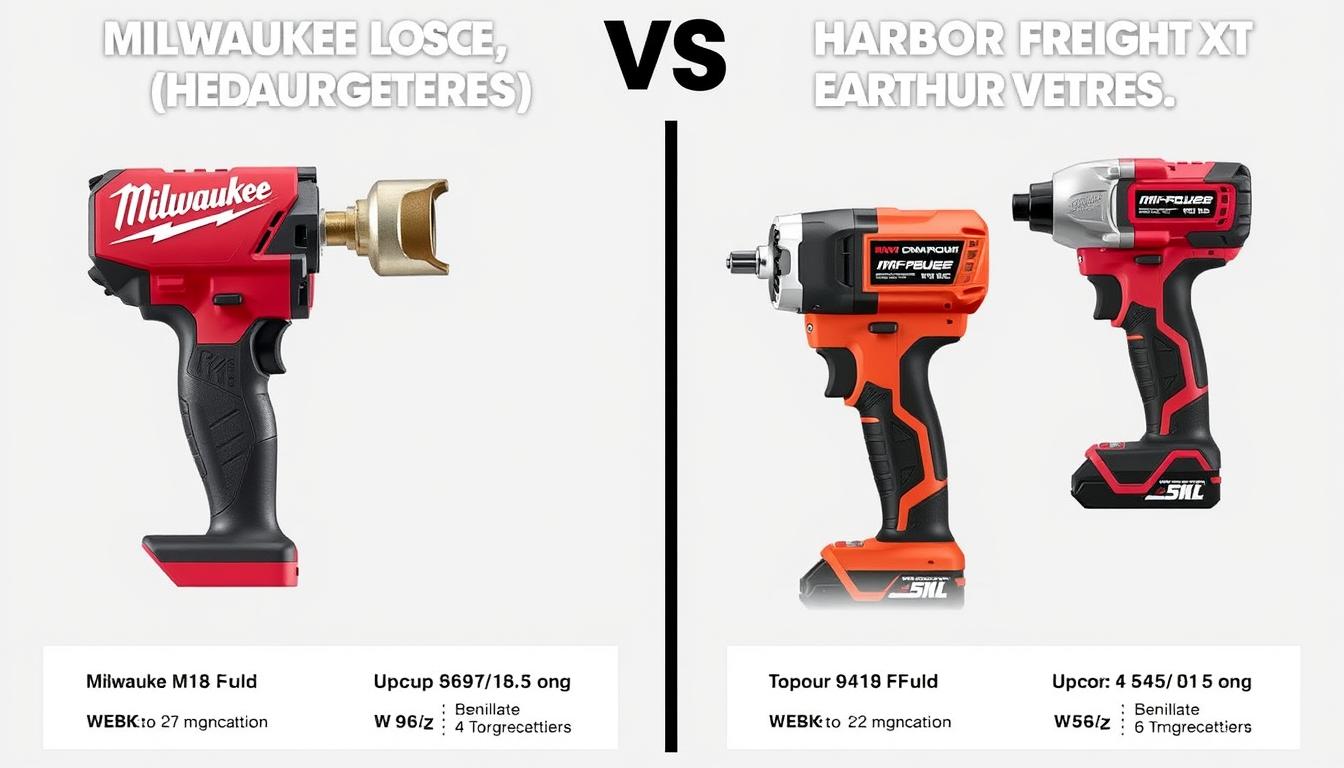
Price Comparison
Milwaukee tools typically cost 2–4× more than comparable Harbor Freight tools. That higher price reflects faster electronics, more robust housings, and a long-standing service and warranty network. If you buy Milwaukee, factor in costs for batteries (high-capacity packs add $89–$199 each) and chargers—many pros buy kits that include two batteries and a fast charger to avoid downtime.
Milwaukee Pricing (typical)
- M18 FUEL 1/2″ High Torque: $269–$399 (tool-only)
- M18 FUEL 3/4″ High Torque: $299–$429 (tool-only)
- Batteries: $89–$199 depending on capacity (consider 8.0Ah–12.0Ah for heavy use)
- Kits (tool + 2 batteries + charger): $399–$599
Harbor Freight Pricing (typical)
- Earthquake XT 1/2″: $149–$199 (tool-only)
- Bauer 1/2″: $79–$99 (tool-only)
- Pittsburgh 1″ Air impact: $129–$149
- Batteries: $39–$79 depending on capacity
Torque and Power
Paper specs can be deceiving: Harbor Freight’s Earthquake XT advertises very high breakaway torque, often close to Milwaukee’s published numbers. In practice, Milwaukee tools tend to produce more consistent torque under load and maintain that output across repeated cycles. Harbor Freight models can be powerfull enough to remove many stuck lug nuts, but some users note a drop-off in consistent output over heavy continuous use.
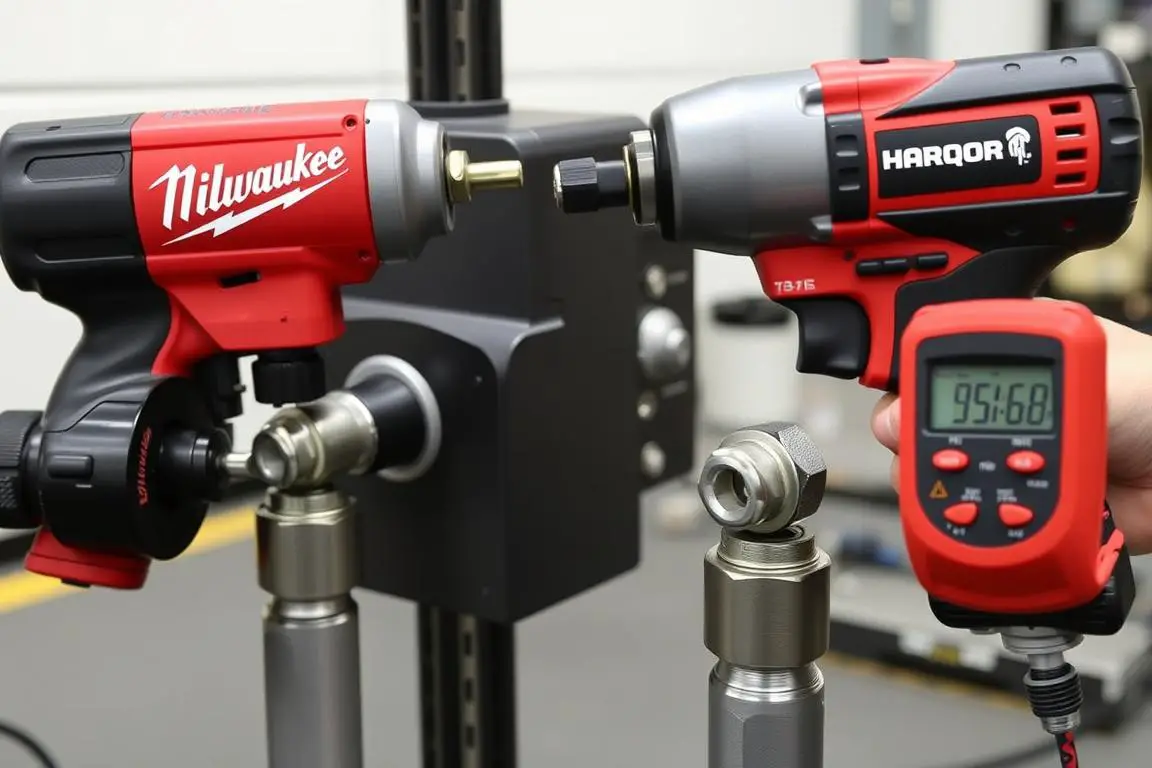
Durability and Reliability
The biggest divergence is durability. Milwaukee invests in stronger internal components, better sealing, and advanced battery management, so tools survive heavy shop cycles. Harbor Freight tools, while improved, are often designed for lighter duty—think occasional heavy jobs rather than daily fleet work. If you expect to change lots of wheels (for example, you also truck four vehicles a day or maintain a small fleet), Milwaukee’s higher initial investment often pays off through fewer failures and less downtime.
User sentiment backs this up: plenty of owners have reported switching to Milwaukee after trying cheaper impacts because the higher-end models simply outlasted their previous air and cordless tools. That said, for occasional projects Harbor Freight’s lower cost means you can get useful torque without the pro price tag.
Total Cost of Ownership (TCO) — two quick scenarios
- Scenario A — Heavy user (200 tires/year): Buy Milwaukee M18 FUEL 1/2″ + 2×12.0Ah batteries + fast charger. Higher upfront cost but less downtime, fewer replacements, and longer battery life; better long-term ROI.
- Scenario B — Occasional user (2 tires/year): Buy a Harbor Freight Bauer or Earthquake XT tool-only; save cash now and accept the chance you’ll replace it sooner if you start using it more frequently.
Practical tip: if you ordered a cheaper model and it feels underpowered, Harbor Freight’s return/replace policies can make it cheaper to send back and upgrade than to suffer with a tool that leaves you using a cheater bar or elbow grease to finish the job.
Which Brand is Best for You? (DIY vs Professional Use)
Choosing between Milwaukee and Harbor Freight comes down to how often you work on vehicles, the types of wheels you service, and your budget. Below is a practical decision guide, a quick checklist to help you decide, and our recommended models for different needs.
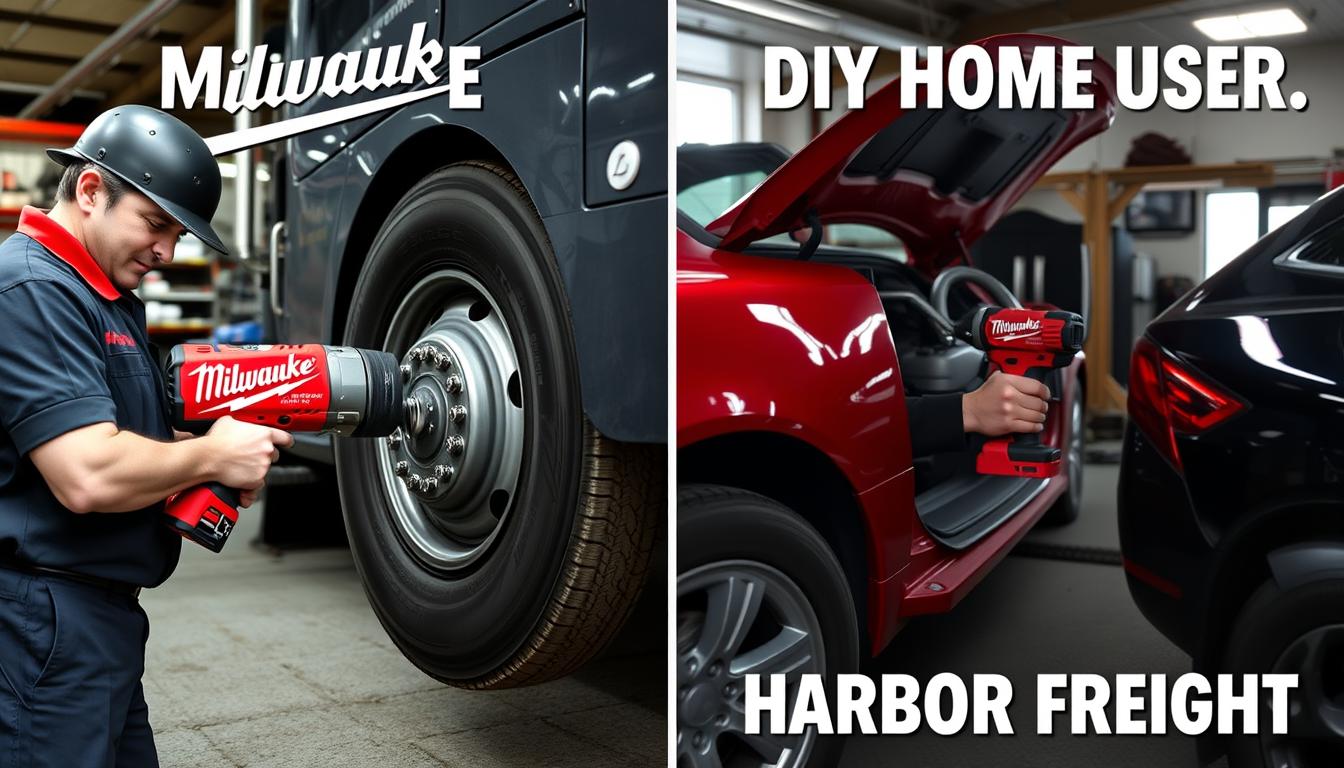
Choose Milwaukee If:
- You work on vehicles professionally or manage a small fleet (also truck four or more regularly)
- You regularly encounter extremely tight, rusted, or commercial lug nuts
- You need long-term reliability and consistent output — milwaukee high torque tools deliver repeatable performance
- You already own other M18 platform tools and want battery compatibility
- You value longer battery life and fewer replacements (recommendations source batteries point to 8.0Ah–12.0Ah for heavy users)
- Minimizing downtime and service interruptions is critical
If you only buy one professional-grade tool, get the M18 FUEL 1/2″ kit with 2 batteries and a fast charger—this avoids frequent battery swaps and keeps you working.
Choose Harbor Freight If:
- You’re a DIY mechanic who changes tires occasionally or works on passenger vehicles
- You’re on a tight budget and want the best torque-per-dollar
- You need a capable tool for specific, infrequent projects and don’t mind replacing it sooner
- You want a backup impact without paying pro prices—cheaper to send back and upgrade if it’s not adequate
- You can accept slightly less consistent performance in exchange for lower cost
- You don’t have an existing battery ecosystem or prefer air tools in a shop
For occasional work, getting an Earthquake XT or Bauer model saves money and still handles most lug nut jobs without requiring elbow grease or a cheater bar.
Best Value Recommendations
Below are our top picks based on typical user scenarios (powerful picks for pros, budget picks for occasional users). If you changed wheels newer or put newer tires on vehicles recently, these recommendations cover common passenger and truck needs.
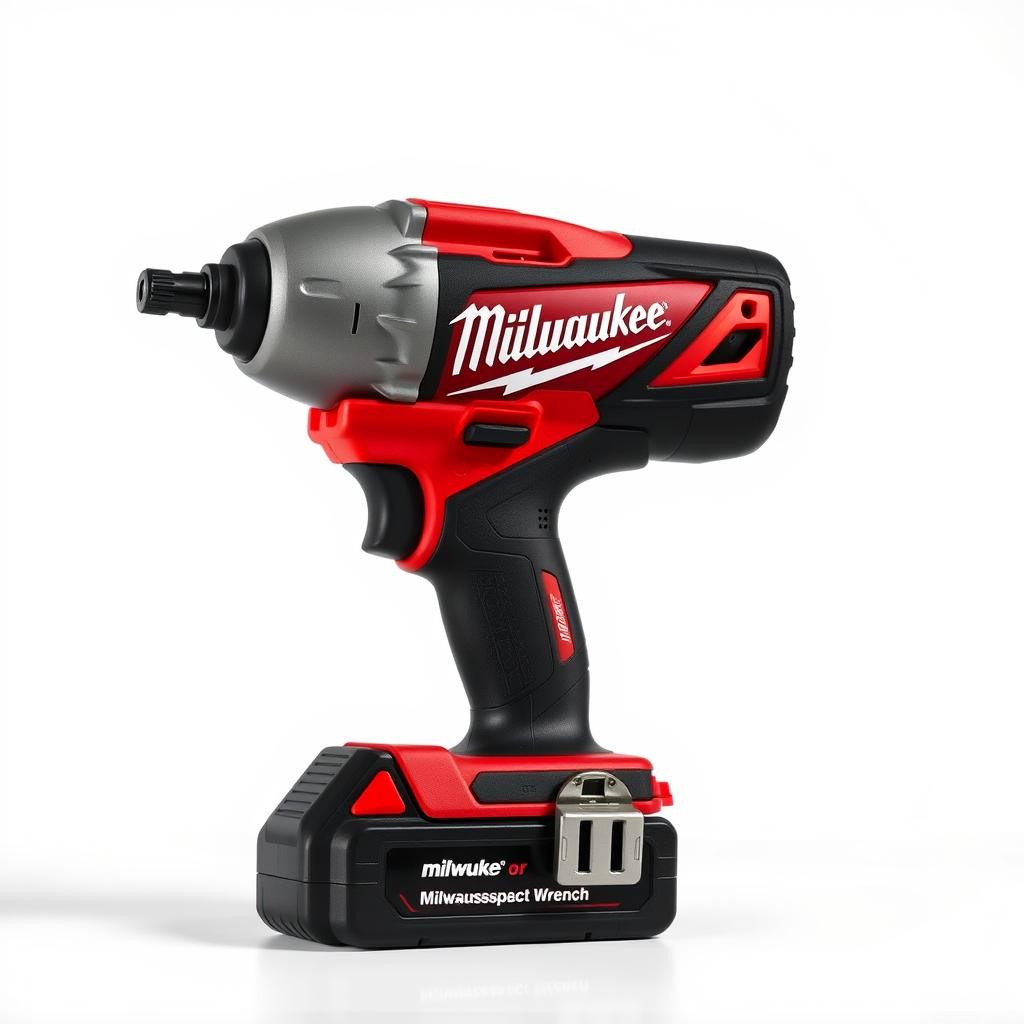
Best Overall: Milwaukee M18 FUEL 1/2″
The top choice for professionals—best balance of milwaukee high torque performance, durability, and battery ecosystem. Ideal for frequent wheel changes and heavy-duty work.
Pro tip: buy the kit with charger and two 8.0Ah–12.0Ah batteries for continuous operation and longer battery life.
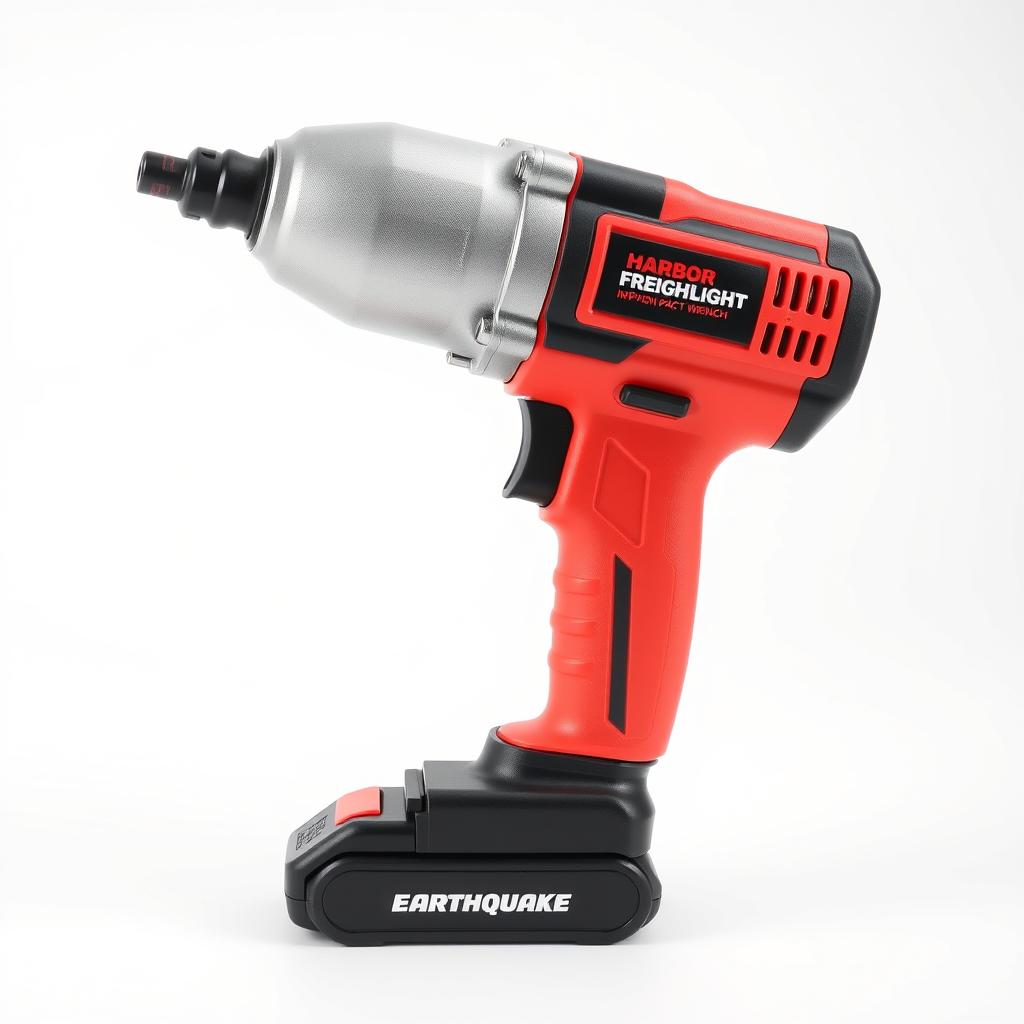
Best Value: Earthquake XT 1/2″
Great torque for the price—powerful enough to remove many stuck lug nuts without the heavy investment. Suitable for DIYers and small shops on a budget.
If you plan to use it more often, budget for a spare battery or a kit so you don’t wait on charging.
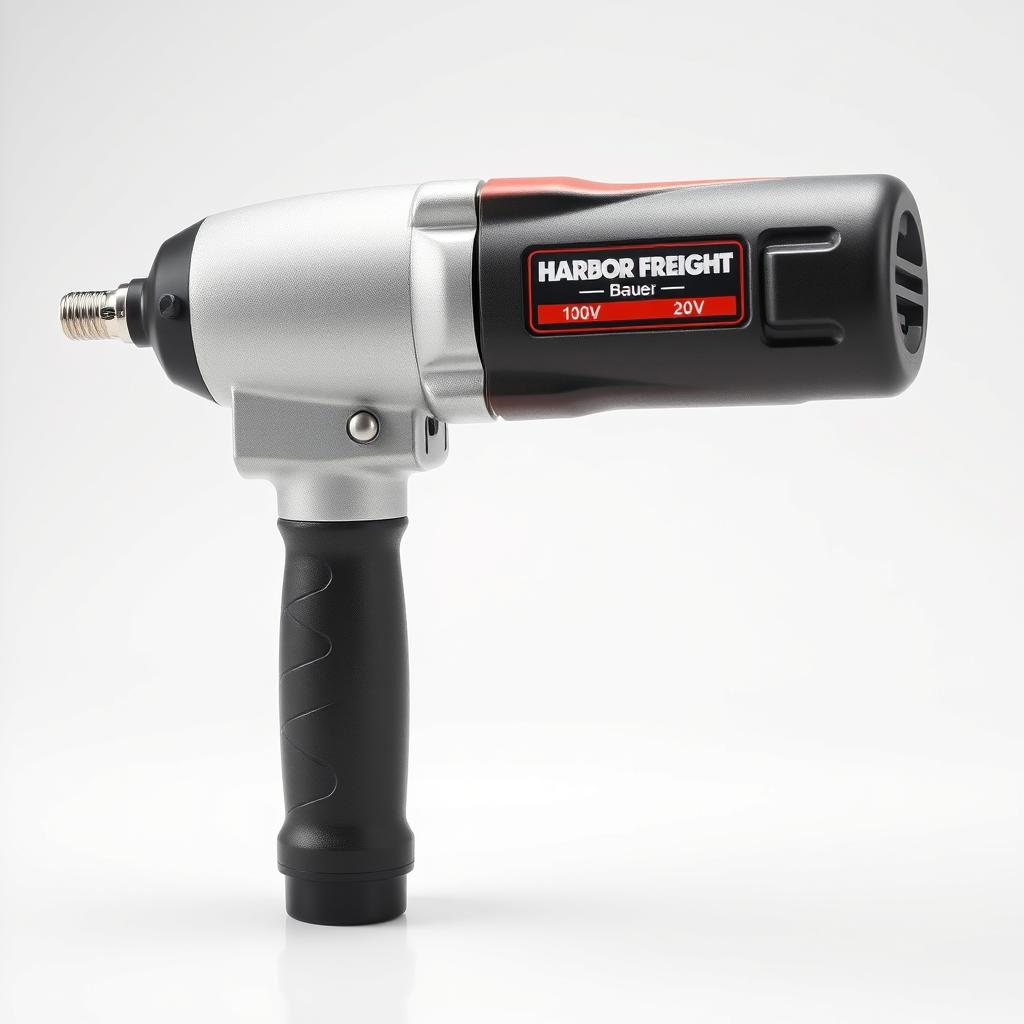
Budget Pick: Bauer 20V 1/2″
Lowest-cost option for homeowners—lightweight and sufficient for standard passenger-vehicle lug nuts. If it’s underpowered for a specific job, you might send it back and step up to the Earthquake XT.
Pro Tip: If You Only Buy One Tool
Buy a Milwaukee kit (M18 FUEL 1/2″) with two batteries and a fast charger if you expect to change many wheels or work professionally. For occasional jobs, buy the Earthquake XT and one spare battery to avoid downtime—this is often the best mix of cost and capability for DIY users.
Essential Accessories for Lug Nut Removal
To get the most out of your impact wrench and avoid damage to wheels or fasteners, add a few essential accessories. These items improve performance, protect wheels, and reduce the chance you’ll need to use a cheater bar or elbow grease to finish the job.
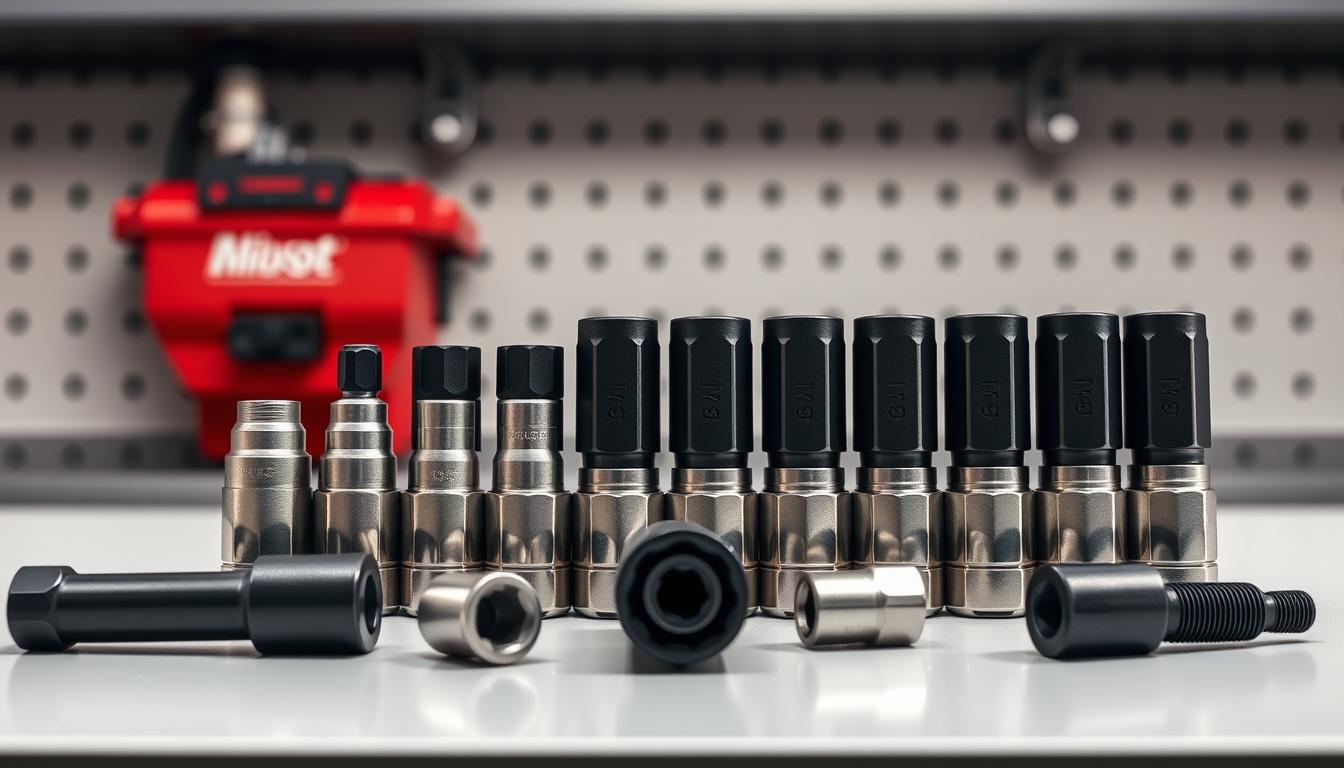
Impact Socket Sets
Always use impact-rated sockets (black phosphate or impact-grade steel). Chrome hand sockets can crack or shatter under high torque. For most passenger vehicles, keep deep-well impact sockets in 17mm, 19mm, 21mm, and 22mm. For many trucks you’ll also want 33mm or 1-1/2″.
Buy a set that includes common sizes and deep wells so you don’t have to jury-rig something with a cheater bar; having the right socket avoids rounding the nut and needing to send back parts for replacement.
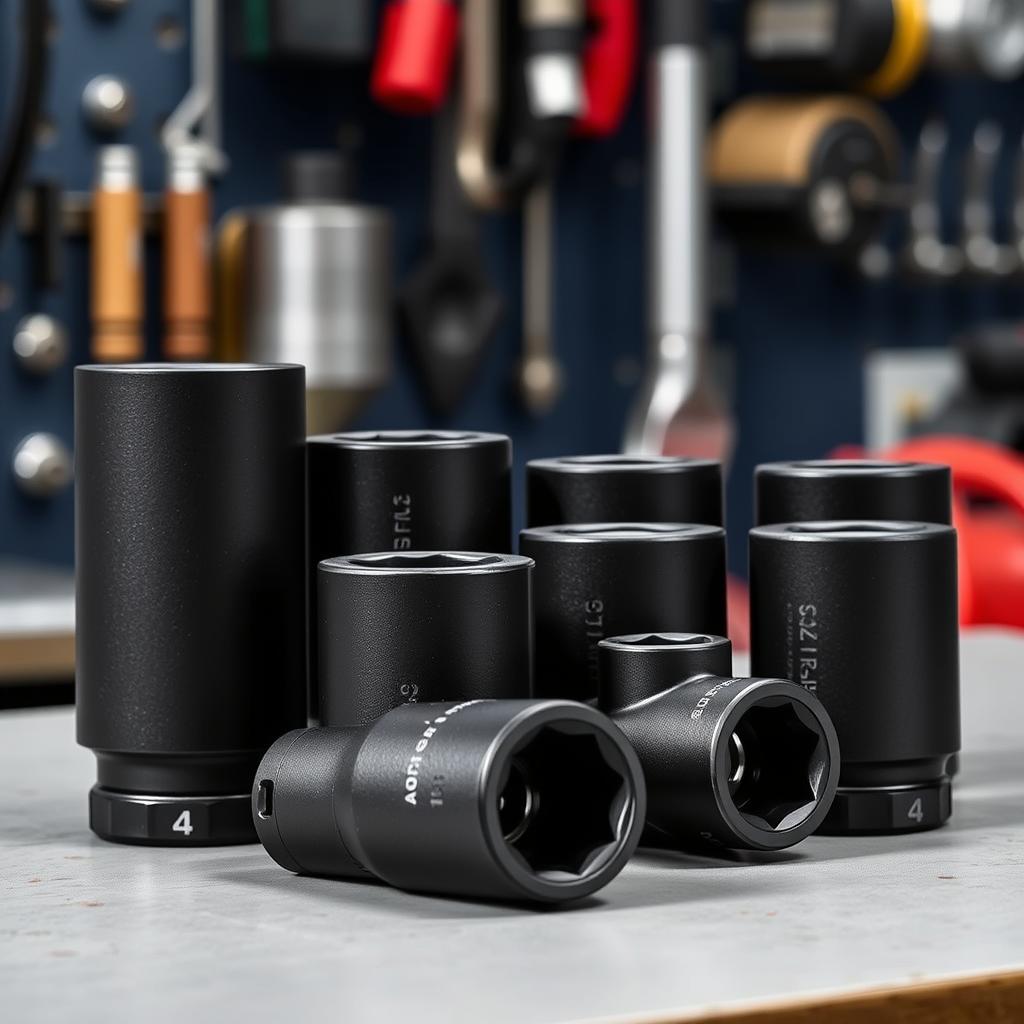
Torque Sticks
Torque sticks (torque-limiting extensions) are color coded and flex at set torque levels, helping prevent over-tightening when using an impact wrench to install lug nuts. They’re a quick way to approximate safe installation torque before finishing with a proper torque wrench.
Recommendation: use torque sticks for quick installs, but put torque wrench on for final verification—especially on newer wheels or critical applications.
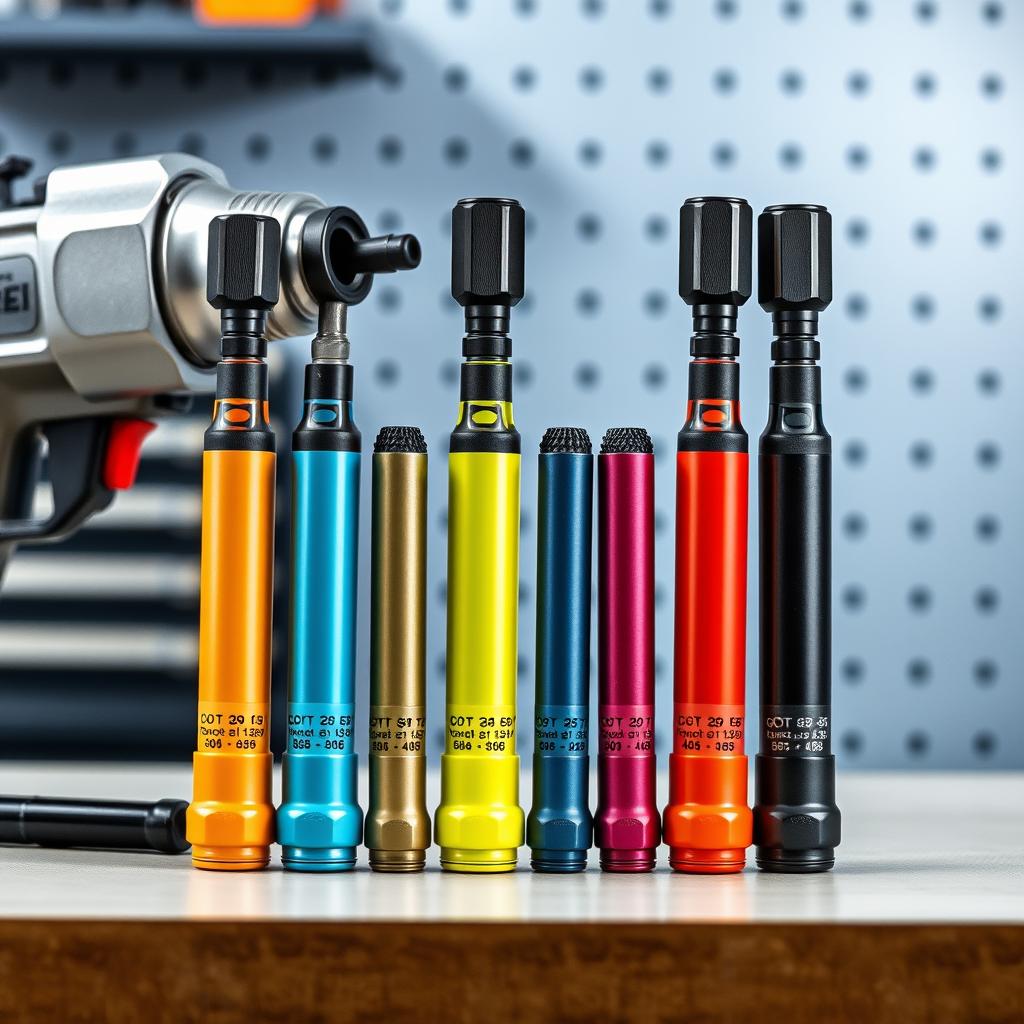
Protective Socket Sleeves
Thin-wall plastic or rubber socket protectors prevent scratching or marring alloy and painted wheels when you remove lug nuts. They slip over impact sockets and are inexpensive insurance for expensive wheel finishes—especially useful when you’ve just had newer tires put on or changed wheels newer than the originals.
If you work on show cars or custom wheels, always use protective sleeves rather than risking cosmetic damage that costs more to fix.
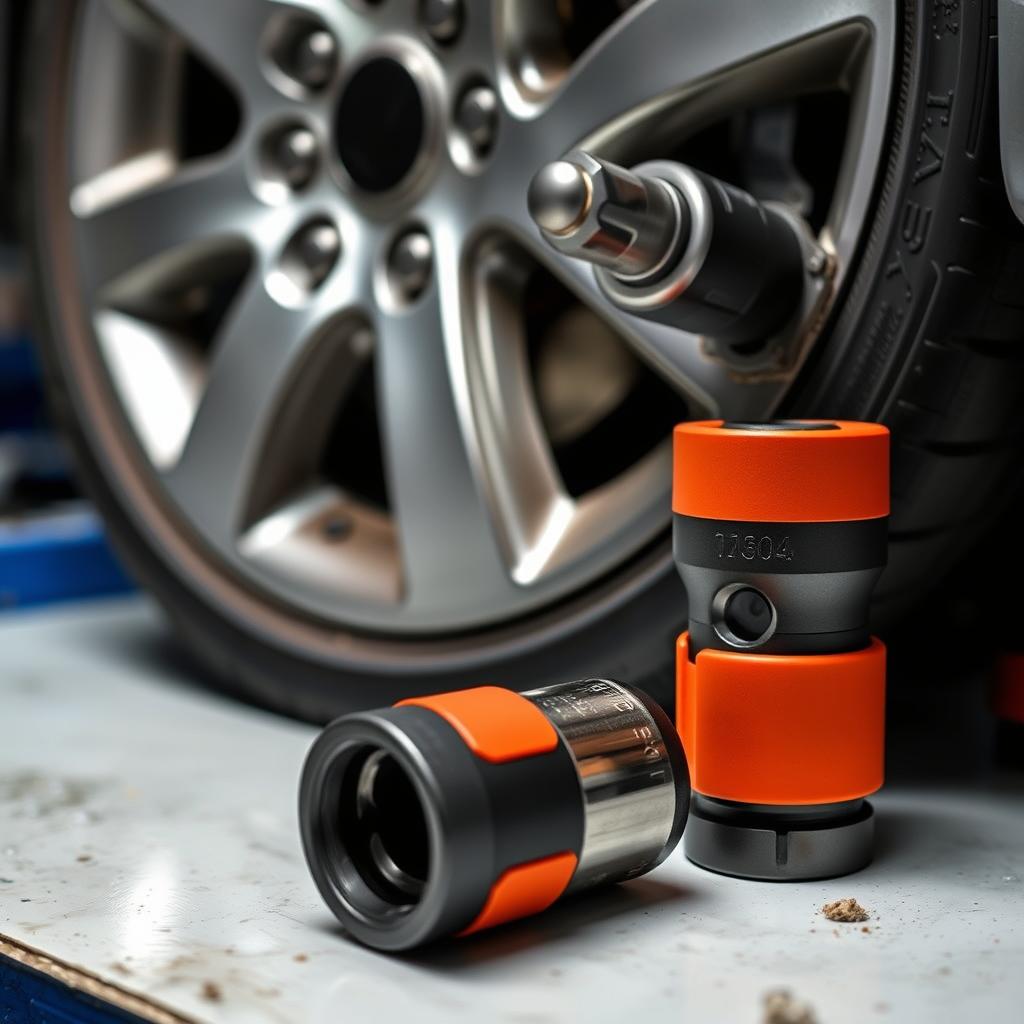
Complete Your Lug Nut Tool Kit
Starter checklist: 1) one deep-well impact socket set (common sizes), 2) torque sticks for quick installs, 3) protective socket sleeves, and 4) at least one spare battery (if cordless)—many users who upgraded their battery to a 12.0Ah pack report longer runtime and fewer interruptions when changing multiple wheels.
Proper Technique for Removing Stubborn Lug Nuts
Even the most powerful impact wrench can’t fix poor technique. Follow these professional, safety-first steps to remove stubborn lug nuts without damaging wheels or fasteners.
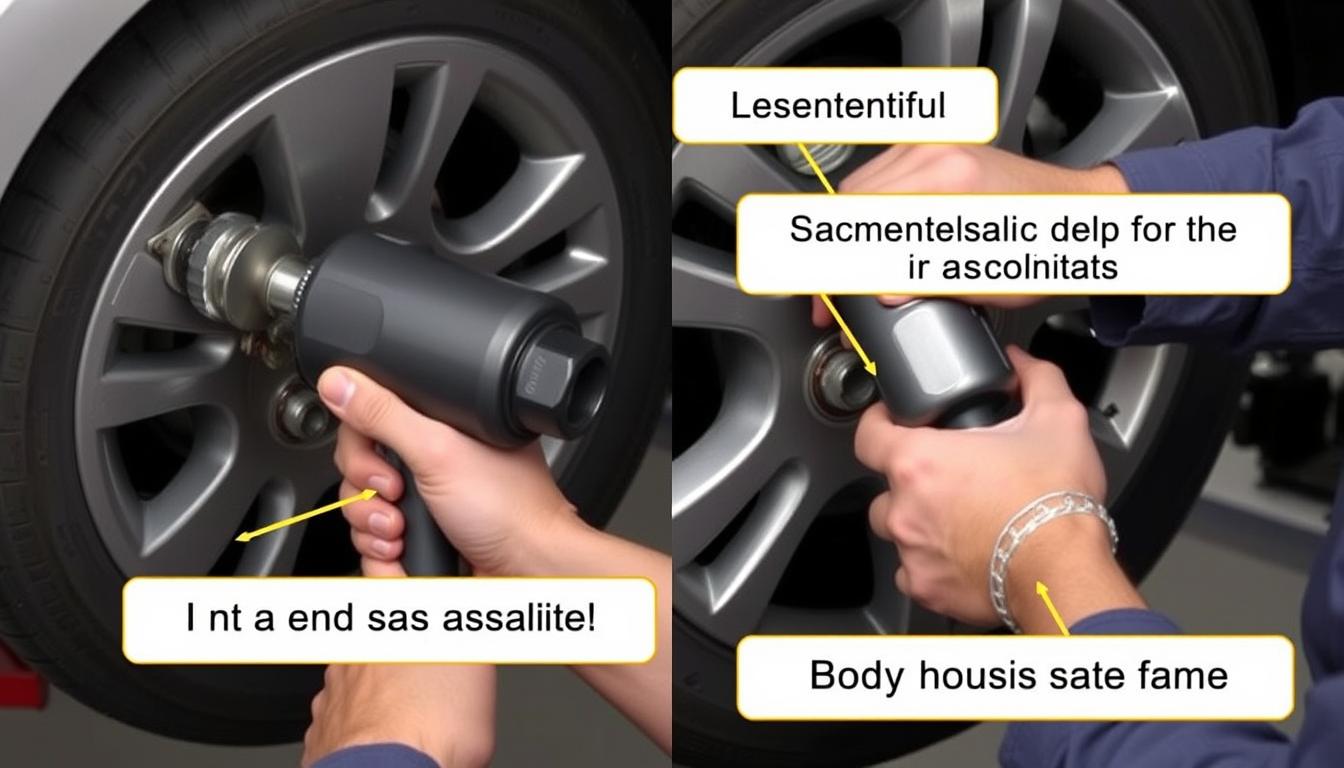
- Preparation is key.
- Park on level ground, chock the opposite wheels, and loosen lug nuts slightly before lifting.
- For rusted or seized nuts, spray penetrating oil and let it soak for 10–15 minutes—this often avoids needing old used elbow grease or a cheater bar nut approach.
- Support the vehicle safely.
- Always use jack stands—never rely solely on a jack. This reduces the chance of a sudden collapse while you apply torque.
- Use the correct socket and fit.
- Match socket size exactly; a slightly too-large socket can round the lug and create a problem wheels tried to fix later.
- Use impact-rated sockets (black phosphate); protective sleeves help avoid scuffing newer wheels if you’ve just put newer tires or changed wheels newer than the originals.
- Engage the socket fully and apply inward pressure.
- Push the impact wrench firmly into the socket while triggering—this helps the tool bite and prevents the tool from walking off the nut.
- If you feel the wrench slipping, stop and reposition; don’t keep forcing it and risk rounding the nut.
- Use short bursts, not long holds.
- Tap the trigger in short powerful bursts to break the initial corrosion bond. Many users find this method better than continuous trigger hold for stubborn nuts.
- If a nut won’t budge, try tightening it a quarter-turn, then short-burst remove—it can break the initial seize.
- Apply heat only as a last resort and safely.
- Carefully heating the lug nut (not the wheel) with a propane torch can break corrosion bonds. Watch brake components and nearby fluids—avoid applying heat near rubber or plastic parts.
- Know when to stop and switch methods.
- If the nut starts to round, stop immediately. Switch to a lug nut extractor or seek professional help—continuing risks damage and higher repair cost.
- If your tool isn’t up to the task, think might send it back and upgrade—sometimes it’s cheaper to send back a low-powered unit and buy a higher-capacity kit with charger two batteries than to struggle through jobs.
Safety Warning
Always wear eye protection and gloves when using impact tools. After removal, tighten lug nuts to spec using a calibrated torque wrench—put torque wrench on as the final step and torque to the vehicle manufacturer’s specification. If you’re a long-time user or member ship years of experience, remember to check battery charge and tool condition regularly to avoid m18 far problem scenarios where power drops mid-job.
Quick troubleshooting flow
If a lug nut won’t budge: penetrating oil → wait 10–15 mins → short-burst impacts → apply heat if safe → use extractor if rounding begins. Avoid resorting to a cheater bar for safety and to protect wheel studs.
FAQs About Milwaukee & Harbor Freight Lug Nut Tools
Are Harbor Freight torque wrenches reliable enough for lug nuts?
Quick answer: Yes for DIY and occasional use; consider higher-grade tools for professional work.
Harbor Freight torque wrenches (like the Pittsburgh Pro line) generally offer acceptable accuracy for passenger-vehicle maintenance at a low price. They work fine for tightening lug nuts to spec on family cars or occasional jobs. For critical applications—fleet work, commercial vehicles, or where safety margins are tight—invest in a calibrated, higher-end torque wrench (brands like CDI or Precision Instruments) to ensure repeatable accuracy.
Reminder: never use a torque wrench to break lug nuts loose. Use an impact wrench for removal, then put torque wrench on for final tightening to the manufacturer’s specification.
Is Milwaukee worth the extra money compared to Harbor Freight?
Quick answer: Yes for frequent/professional use; maybe not for occasional DIY.
Milwaukee tools command a premium because of build quality, more consistent milwaukee high torque output, broader M18 ecosystem, and better service/warranty. If you change many wheels per week or need dependable performance across years (member ship years of heavy use), Milwaukee often pays for itself through reduced downtime and fewer failures.
For homeowners who change tires infrequently or need a one-off tool, Harbor Freight can deliver impacts find powerfull enough to remove most lug nuts at a much lower cost—sometimes it’s cheaper to send back and upgrade if it doesn’t meet your needs.
How much torque do I need to remove lug nuts?
Quick answer: Passenger cars: 80–100 ft-lbs standard torque; breaking them loose may need 300+ ft-lbs. Trucks/commercial: much higher.
Most passenger vehicles have torques in the 80–100 ft-lbs range when tightened, but breaking seized or overtightened lug nuts often requires several hundred ft-lbs. Heavy trucks and commercial gear can have lug nuts tightened to 150 ft-lbs or more, and breaking those free can require 1,000+ ft-lbs in extreme cases. That’s why high-torque cordless tools (Milwaukee and Earthquake XT class) are popular for tough jobs.
Can cordless impact wrenches remove lug nuts from heavy-duty trucks?
Quick answer: Yes—modern high-torque cordless wrenches can, but choose the right model and battery.
High-torque cordless impacts such as Milwaukee’s M18 FUEL line (milwaukee impact wrench specs vary by model) and Harbor Freight’s Earthquake XT advertise breakaway torque in ranges meant for truck lug nuts. In many tests these cordless units outperform older air impacts. If you plan to work on heavy trucks regularly, select a high-torque model, pair it with larger capacity batteries (8.0Ah–12.0Ah), and consider a kit with charger two batteries so you don’t run out of power mid-job.
As one forum user spoke one said: the newest high-torque Milwaukees can bust free bolts up to 3/4″—real-world users often report removing large lug nuts they previously needed to attack with bars or air tools.
What’s the difference between breakaway torque and fastening torque?
Quick answer: Breakaway (nut-busting) torque = force to loosen a fastener; fastening torque = force the tool can apply when tightening.
Breakaway torque is typically higher than fastening torque and indicates the tool’s peak ability to break corrosion or seizing. For example, Milwaukee advertises separate fastening and nut-busting torque figures for their high torque models—always check which spec a manufacturer lists when comparing tools.
What about returns, battery life, and long-term value?
Quick answer: Check retailer return policies; invest in larger batteries for heavy use.
If a cheaper tool doesn’t meet expectations, many buyers find it’s cheaper to send it back (cheaper send back) and upgrade rather than struggle through jobs. Battery longevity varies widely: higher-capacity packs (12.0Ah) deliver longer runtime and often a longer overall life if you rotate charge cycles. Recommendations source batteries suggest buying at least one spare battery for cordless work to avoid downtime—especially if you changed wheels newer or put newer tires on multiple vehicles in one session.
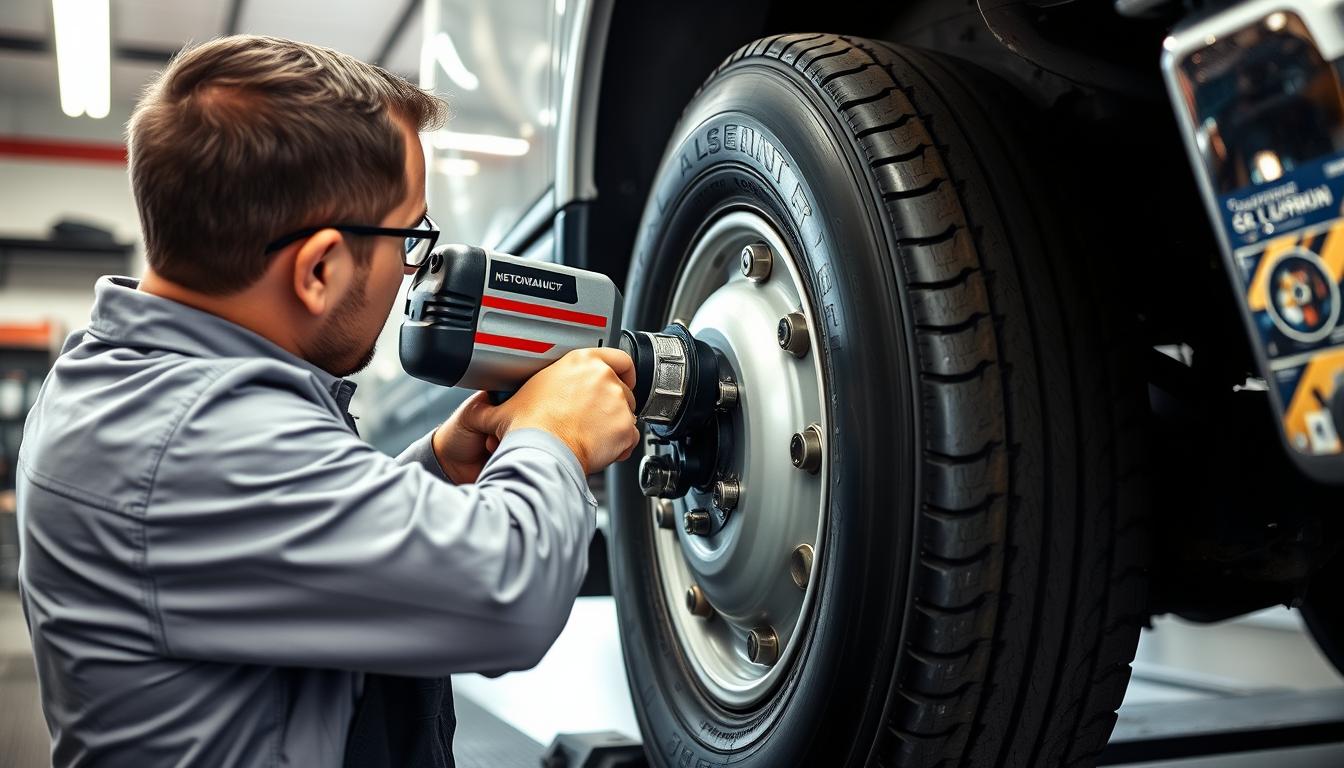
Conclusion: Making Your Final Decision
There’s no single right answer — Milwaukee and Harbor Freight both have places in a garage depending on your needs. Milwaukee delivers consistent milwaukee high torque performance, longer-lasting components, and a broad M18 ecosystem that professionals and heavy users rely on. Harbor Freight delivers excellent torque-per-dollar and is often the smarter choice for DIYers or infrequent wheel work.
If you only buy one tool: choose a Milwaukee M18 FUEL 1/2″ kit with two batteries (8.0Ah–12.0Ah recommended) and a fast charger for professional use or frequent tire changes; choose a Harbor Freight Earthquake XT or Bauer model if you want powerful performance at a much lower up-front cost and can accept replacing the tool later. Many buyers who ordered 12.0 battery packs report 12.0 battery longer runtimes and fewer interruptions when changing multiple wheels or when they’ve just put newer tires on several vehicles.
Bottom line: pick the tool that matches how often you work, the size of the lug nuts you service (passenger cars vs. trucks), and your tolerance for downtime. A pro who services fleets and also truck four or more vehicles will likely recoup the Milwaukee investment; a homeowner changing a couple of tires a year will find Harbor Freight options fit the bill.
Ready to Tackle Those Stubborn Lug Nuts?
For heavy, repeated use — buy a Milwaukee kit with two batteries (consider 12.0Ah for long jobs). For occasional work — start with the Earthquake XT or Bauer and add a spare battery if you need more runtime.
